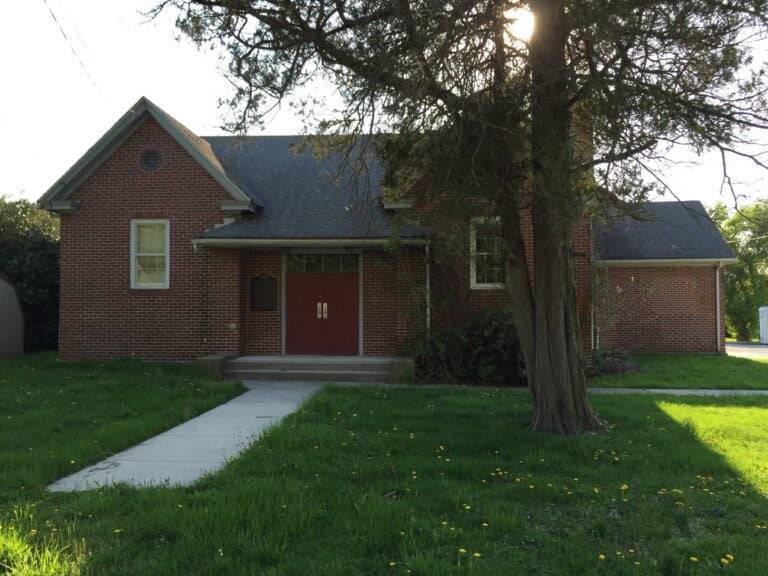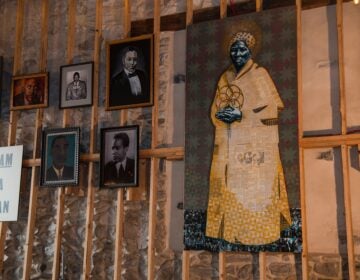Delaware schoolhouse may get rightful place in Black history
Lawmakers propose turning the site, and two others connected to the landmark Supreme Court desegregation ruling, into National Park Service affiliates.

The former Hockessin Colored School No. 107 is one of several buildings in northern Delaware would be highlighted under new legislation recognizing the facilities' importance in the Brown v. Board of Education ruling. (Courtesy of Friends of Hockessin Colored School)
A small brick building surrounded by subdivisions and ballfields in the northern Delaware community of Hockessin played a role that belies its size. This one-room schoolhouse built in 1920 specifically for Black students became part of one of the biggest court decisions in U.S. history.
Unlike their white counterparts, Black students like Shirley Bulah were not provided transportation to their school, known as Hockessin Colored School No. 107. Her mother, Sarah Bulah, convinced Wilmington lawyer Louis Redding to sue the state.
The Bulah case was eventually combined with others in Virginia, South Carolina and Kansas to become the landmark Brown v. Board of Education case in which the U.S. Supreme Court ruled that segregation was unconstitutional.
The Hockessin school has been mostly vacant since it closed in 1959, but there’s a new effort to breathe life again into the facility and the other schools that were part of the Brown ruling. U.S. Rep. Jim Clyburn of South Carolina and U.S. Sen. Chris Coons of Delaware have introduced legislation that would add the schools as National Park Service affiliates, in an effort to use the buildings to better educate the public about their role in the Brown case.
For Coons, the effort is personal. He grew up in Hockessin not far from the school.
“Even though I grew up just a stone’s throw away from that school, I didn’t know that history,” he said. “If we don’t save these historic facilities, the schools in which these struggles happened, and if we don’t teach, we won’t know our history and we won’t make progress going forward.”
The effort is backed by the National Trust for Historic Preservation, a private, nonprofit group chartered by Congress in 1949.
“One of our most important initiatives to tell the whole history of the United States is our African American Cultural Heritage Action Fund,” said Katherine Malone-France, chief preservation officer at the National Trust. She said helping visitors understand what happened at these school buildings is an important part of the group’s effort “to identify, elevate and preserve the stories and places of African American achievement and activism.”
In addition to the Hockessin school, Howard High School in Wilmington and the old Claymont High School would be highlighted if the legislation is approved. Attorney Redding, who graduated from Howard, also sued the state on behalf of eight Black students who were denied admission to Claymont High. At the time, Black students were bused into the city of Wilmington to attend Howard.
Sites in Farmville, Va., Summerton, S.C., and Washington, D.C. that were also part of the Brown case would get similar attention.
Delaware historian Cheryl Renée Gooch applauded the decision.
“I’m elated that the congressman and senator are supporting this legislation,” she said. “As an educator and historian, I’m constantly interested in utilizing the sites and resources to help communities understand their importance.”
Rep. Clyburn said having the National Park Service help preserve and present these sites will help drive home the historical impact of what took place there.
“Dates are not all that important, what’s important are the lessons you get from the history,” he said.
He hopes others can be as influenced as he was by a visit to Farmville, Virginia, where students at Robert Russa Moton High School went on strike to protest conditions at their segregated school.
“I cannot tell you what it did for me when I first visited Farmville, Va.,” Clyburn said. “I have never been able to get over that visit.”

Get daily updates from WHYY News!
WHYY is your source for fact-based, in-depth journalism and information. As a nonprofit organization, we rely on financial support from readers like you. Please give today.





